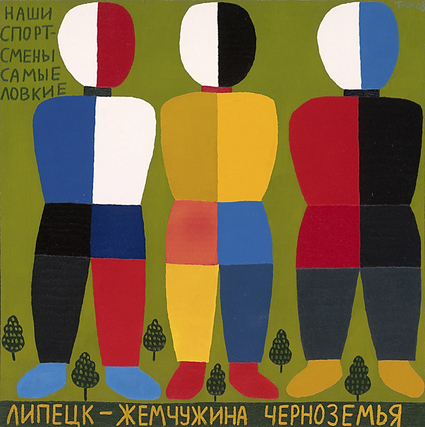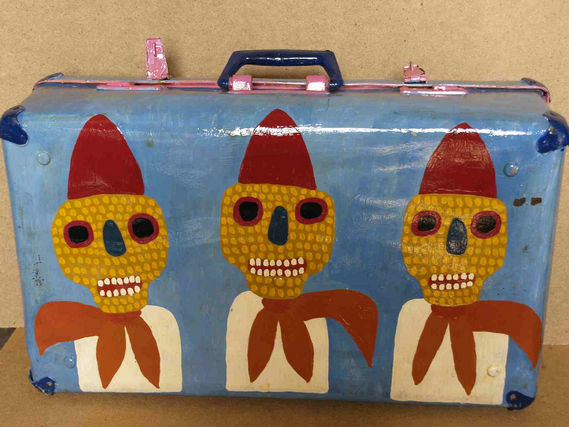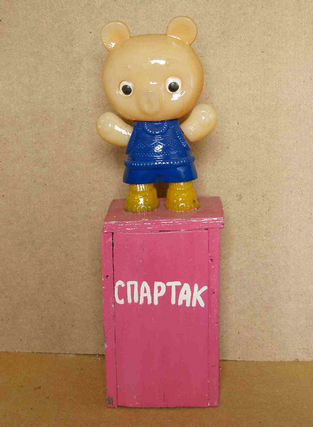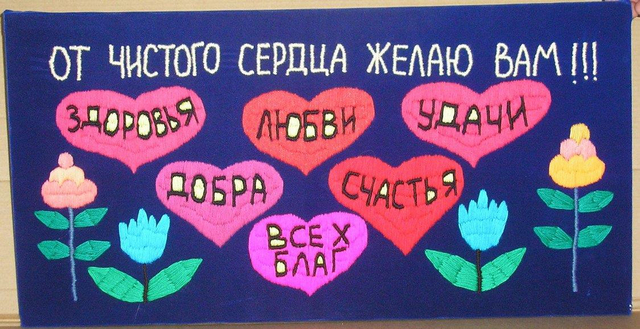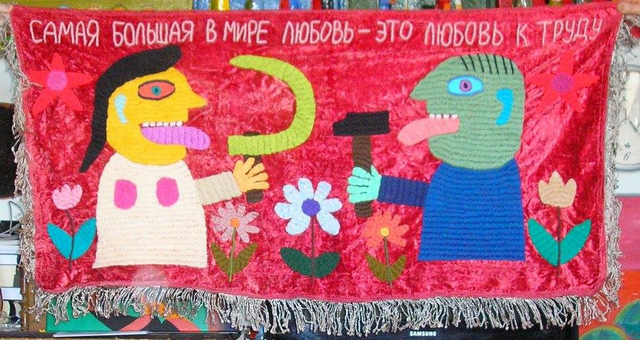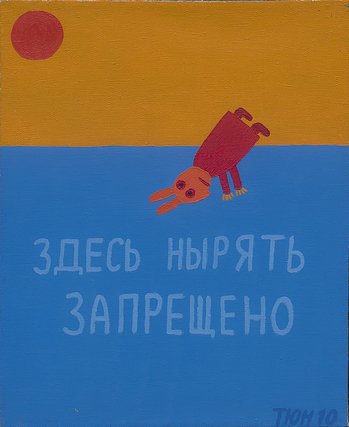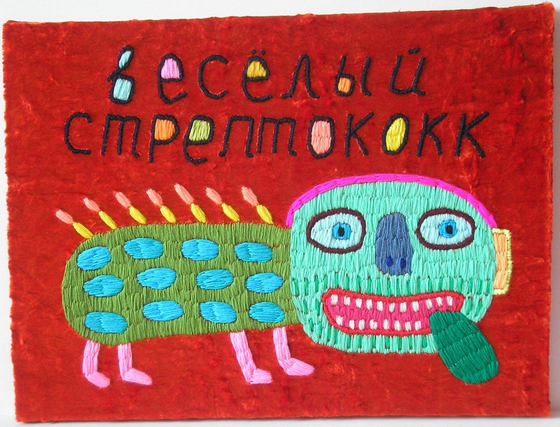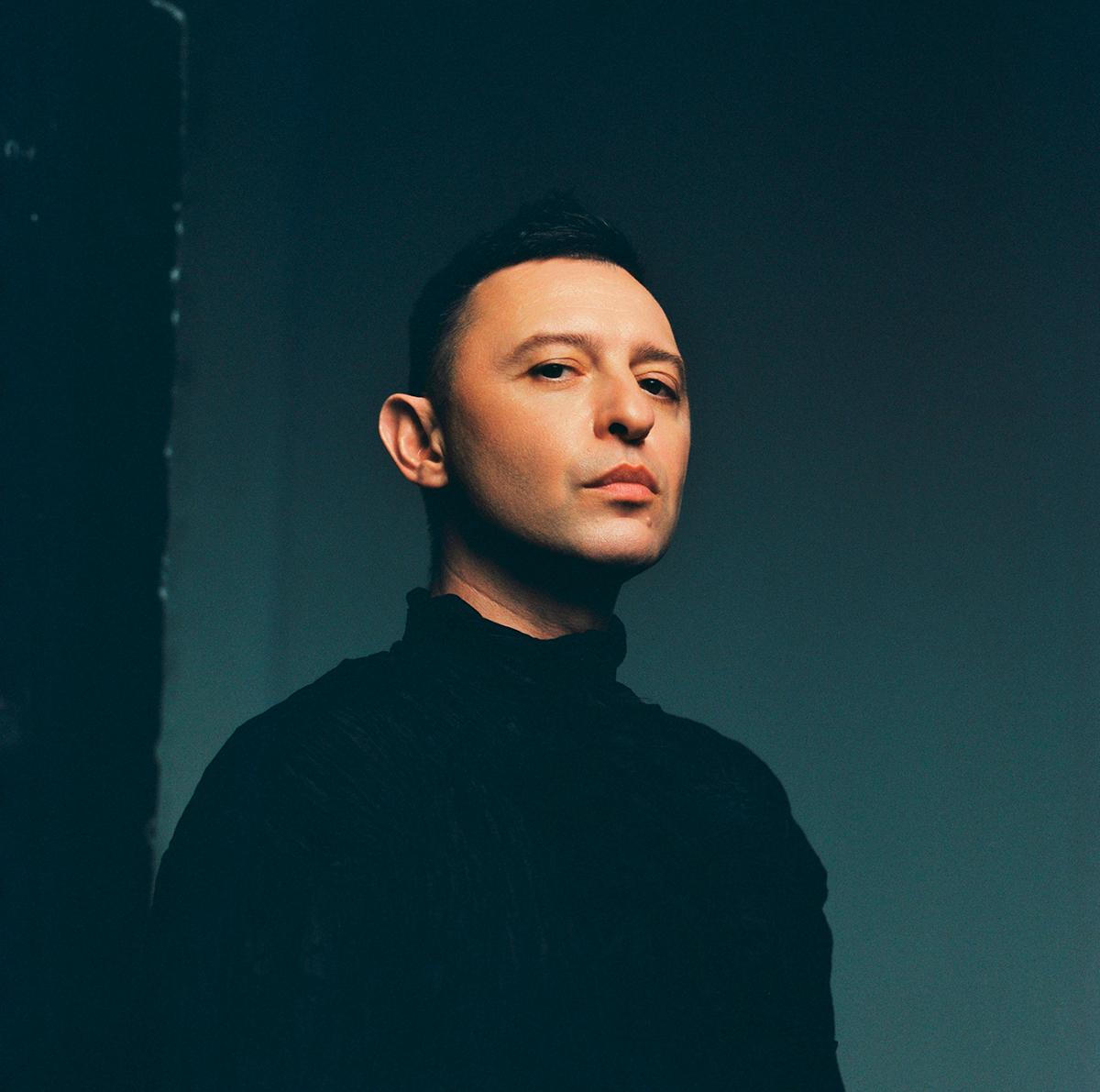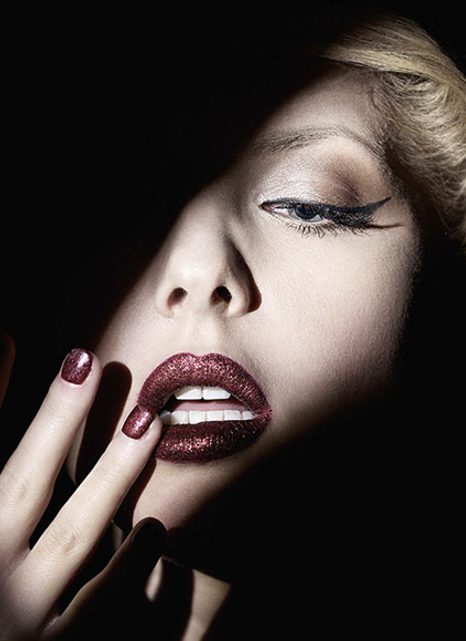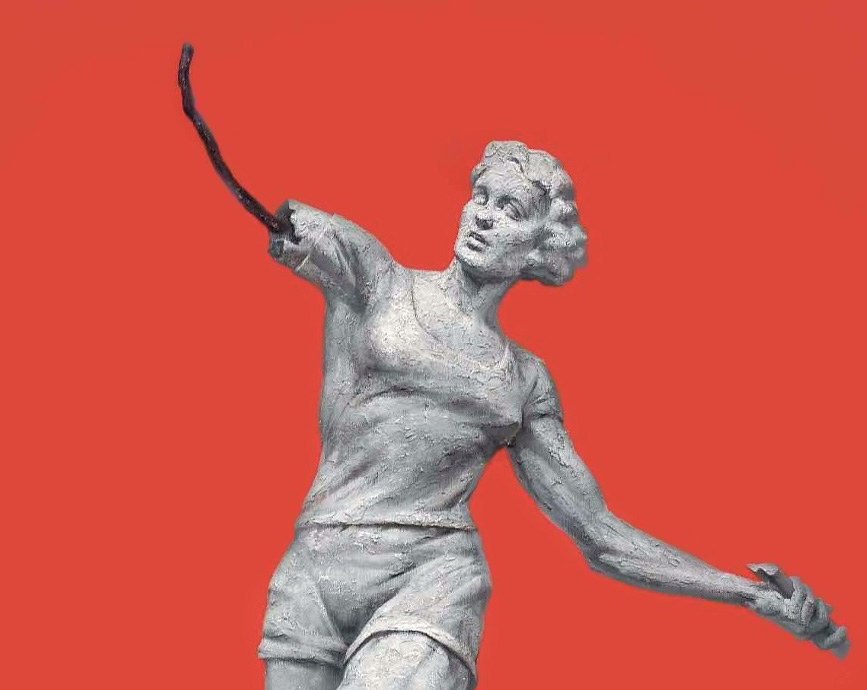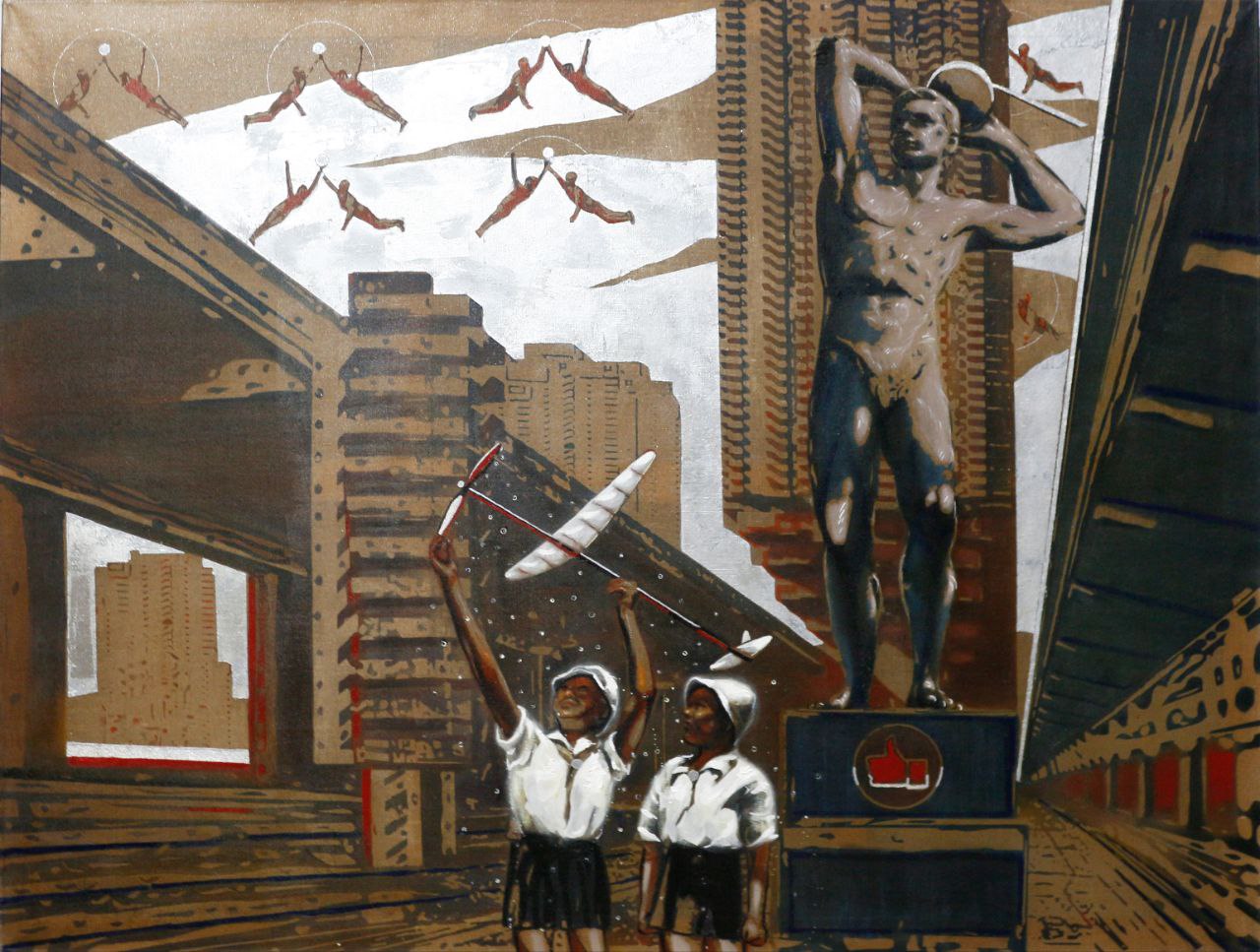Erarta Museum presents an exhibition of art objects and embroideries by the renowned Lipetsk artist Yury Tatianin
- A blend of naïve and conceptual art
- Absurdist reflections on the Soviet everyday life
- The artist’s second solo exhibition at the Erarta Museum
Yury Tatianin's art is ambivalent. Being primitive and incomprehensible at the same time, it needs explanation. The artist’s works are in the permanent collection of the Erarta Museum, and this is his second personal exhibition here.
The viewers of Tatianin's works usually fall into two categories: some appreciate the author’s sense humor, others are completely alien to his aesthetics, and it is not clear to them why all this is being kept in the museum.
Yury Tatianin is a self-taught artist indeed, yet it has been more than twenty years since he first picked up a brush and paint. The artist is honest with himself and with the audience: like the proverbial piano player, he is doing the best he can. An erudite well-versed in literature and art history, he consciously chose the path of naïve art, always more interested in the idea rather than the form.
‘Art is the power of the idea, not of the material’, this is how Yury Albert summarized for the Russian readers the gist of the canonical essay ‘Art after Philosophy’ by Joseph Kosuth. This essay would become a manifesto of conceptualism, a movement that emerged in the United States in the 1960s. Its ideologists abandoned the usual figurative nature of paintings for the primacy of the idea, declaring that art is, first and foremost, the artist's statement, and the viewer is free to interpret (or refuse to interpret) it as he wishes. Having crossed the iron curtain, conceptualism successfully got along with the paradoxes of the socialist reality, and in 1979 Boris Groys wrote an article about the ‘Moscow romantic conceptualism’, the most famous representative of which was Ilya Kabakov.
Surprisingly, the highbrow conceptualism and the primitive folk art are two sides of the same coin. Authors who identify themselves with either style seek to express the depth of the idea born of their imagination, to provide or replace images with text, to construct an alias on whose behalf the artworks are created. The only difference is that naïve artists want to be understood by everyone, while conceptual artists, on the contrary, want to be fundamentally incomprehensible to the general audience.
Yury Tatianin employs both strategies: his manner is simple, yet he deals with complex things, such as the cultural phenomena of the 20th century or the paradoxes of modern life. He almost always supplies images with text. As expected from a conceptualist, even a naïve one, the author distances himself from his works, inventing a pseudonym. Reducing his own name to the abbreviation TYUN, he adds: the Genius of the Land of Lipetsk, Artist and Bookseller (in the 1990s Tatianin was dealing in art books and intellectual literature in his native Lipetsk city). The artist also claims to be the permanent chairman of the ‘Color Blind Disabled Dauber Artists Guild’, on whose behalf he sometimes signs his works.
Having started with the traditional naïve characters like beauties and mermaids, the artist soon progressed to start addressing the problems of our time. He is sometimes called the most relevant artist in Russia, because any story shown in the evening news could appear on his canvas the next morning. The artist himself calls this ‘urgent painting’.
Central TV channels invite him to their talk shows to act as the troublemaker guest. In 2007, the artist presented an exhibition titled ‘Ghouls Will Not Pass!’ accompanied by a performance called ‘Freedom or TV’, in the course of which he smashed a TV set with an ax. Later, his thirst for civil stance expression resulted in a series of tanks sawn out of fiberboard under the title ‘YES to Uralvagonzavod!’
Rejecting the conventions of present-day non-conformism, the artist has always been closer to myth-making. Once he told the journalists that Hugo Chavez had presented him with a red shirt, and the media actually wrote about it! The artist also conjures up various stories, one of which is about Joseph Beuys allegedly billeted in Lipetsk before World War II.
Following the precepts of postmodernism, the artist endlessly quotes the geniuses of the twentieth century. In a series of works from the early 2000s, Yury Tatianin borrows Ilya Kabakov’s communal kitchen dialogues technique, writing over a painted dead hare: ‘Whose hare is this?’ Tatianin chooses the dead hare as his favorite subject, just like Joseph Beuys did before him: in his famous performance the German postmodernist explained to the hare the meaning of contemporary art. Along with the dead hare, Tatianin's paintings feature peasants from the paintings of Kazimir Malevich, the archetypal van Gogh with a bandage over his cut off ear, and the long since mythologized Rosa Luxemburg and Clara Zetkin.
Directly addressing the theme of this exhibition at the Erarta Museum, it should be explained that the general concept of a central park of culture and leisure was coined after the Russian Civil War, when the massive influx of village population to the cities created an urgent need for some organized leisure activities. Central Parks across the country became a part of the ideological project devoted to building a new communist society and forging a new man. ‘An artist must work with the collective memory of his people,’ says Ilya Kabakov.
The exhibition “Park of Culture and Leisure Named after Tatianin” presents the artist’s objects and paintings united by a kind of nostalgic longing for the Soviet past and the paradoxical present. Residents of Lipetsk can easily witness the vitality of the Soviet era traditions: the city has several monuments to Lenin, one of them, carefully painted with bronze paint, is standing in the park, sparkling in the sun. Nearby there is a board of honor for the city’s distinguished workers, another such board is displayed at the central entrance to the city-forming metallurgical plant. In spring, they still whitewash the tree trunks and flower bed borders.
The well-kept Park of Culture and Leisure is a Soviet Paradise, the quintessence of a Soviet person’s expectations from the bright future. And now the future has come, but it is absolutely different from what was expected. At this Erarta Museum exhibition Yury Tatianin comes to grips with the aesthetics of Soviet everyday life in his own way, bringing it to the point of absurdity.

